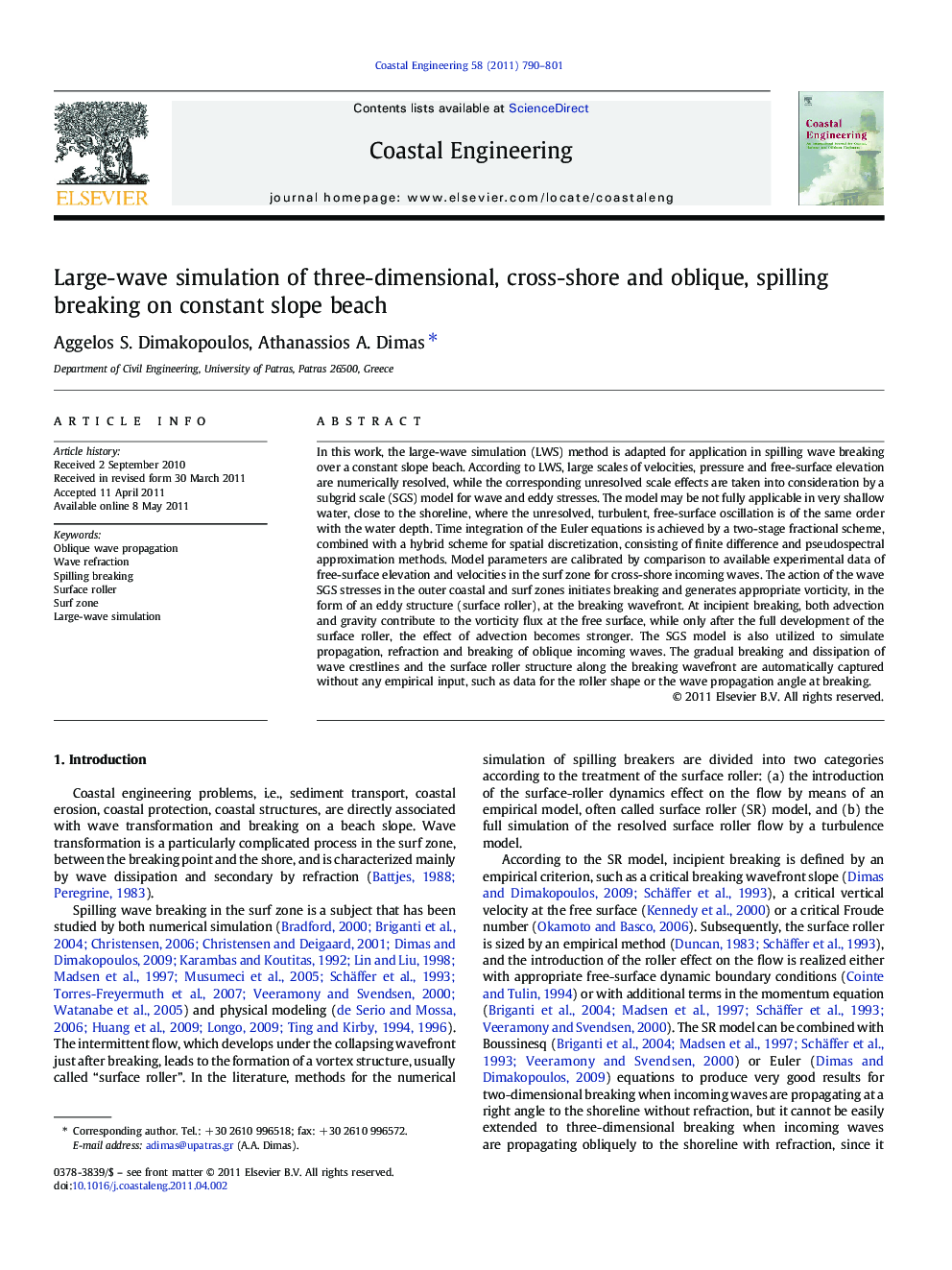| کد مقاله | کد نشریه | سال انتشار | مقاله انگلیسی | نسخه تمام متن |
|---|---|---|---|---|
| 1721118 | 1014466 | 2011 | 12 صفحه PDF | دانلود رایگان |

In this work, the large-wave simulation (LWS) method is adapted for application in spilling wave breaking over a constant slope beach. According to LWS, large scales of velocities, pressure and free-surface elevation are numerically resolved, while the corresponding unresolved scale effects are taken into consideration by a subgrid scale (SGS) model for wave and eddy stresses. The model may be not fully applicable in very shallow water, close to the shoreline, where the unresolved, turbulent, free-surface oscillation is of the same order with the water depth. Time integration of the Euler equations is achieved by a two-stage fractional scheme, combined with a hybrid scheme for spatial discretization, consisting of finite difference and pseudospectral approximation methods. Model parameters are calibrated by comparison to available experimental data of free-surface elevation and velocities in the surf zone for cross-shore incoming waves. The action of the wave SGS stresses in the outer coastal and surf zones initiates breaking and generates appropriate vorticity, in the form of an eddy structure (surface roller), at the breaking wavefront. At incipient breaking, both advection and gravity contribute to the vorticity flux at the free surface, while only after the full development of the surface roller, the effect of advection becomes stronger. The SGS model is also utilized to simulate propagation, refraction and breaking of oblique incoming waves. The gradual breaking and dissipation of wave crestlines and the surface roller structure along the breaking wavefront are automatically captured without any empirical input, such as data for the roller shape or the wave propagation angle at breaking.
Journal: Coastal Engineering - Volume 58, Issue 8, August 2011, Pages 790–801